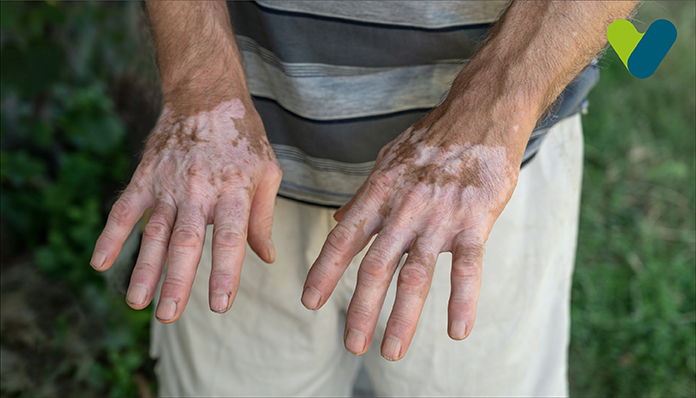When we consider the causes and repercussions of cholesterol in the human body, a lot of important factors come to light. Cholesterol can clog the arteries, which subsequently leads to other chronic diseases, including heart problems. The levels of LDL in the body need to be controlled immeasurably for healthy living.
However, there is one glaring solution that we can use to increase the level of good cholesterol in the body, which is available in the form of High-Density Lipoprotein, commonly known as HDL. We also need to lower the levels of low-density lipoprotein, i.e., LDL, which is easier to do by cutting down on foods that alleviate the problem.
Today, let us focus on how to increase HDL cholesterol with Indian food since it does invite so many LDL-rich products. Learning how to increase HDL and lower LDL with Indian food is not only useful tips for the Indian audience but any culture that shares similarities of cuisine in the form of spice palette and ingredients.
How To Increase Hdl Cholesterol With Indian Food?
When we hear the word cholesterol, our minds immediately jump to conclusions about the effects of bad cholesterol in the body. However, learning how to increase HDL cholesterol in Indian food is a veritable means to lower the bad cholesterol in the body and acquire the good cholesterol that is required for the body to function efficiently.HDL is responsible for transmitting harmful composites like LDL to the liver where it can be broken down and dispersed instead of accumulating in the arteries of the heart and blocking circulation. Thus, knowing how to increase HDL and lower LDL with Indian food can go a long way to help regulate the healthy exchange of bodily fluids for maximum synthesis.
So, here’s how to increase HDL cholesterol with Indian food
Consume Beans And Legumes, i.e, Dal
The Indian diet and most Indian recipes largely revolve around the consumption of substances that contain high amounts of protein daily in the form of beans and legumes. Most Indian recipes use different types of dals for both simple and fine-dine recipes.Dals and beans are staples in most regions of India, therefore how to increase HDL cholesterol Indian food should come naturally to most of the population. For the most part, introducing the following items in your daily diet is an excellent solution for how to increase HDL cholesterol with Indian food:
- Chickpeas or garbanzo beans also called Chhole
- Kidney beans or Rajma
- Dried peas or Watana
- Black beans, Pinto beans, etc.
- Masoor dal
- Moong dal
- Arhar dal
- Chana dal
- Whole moong
Consider introducing items of food like rajma, dals made of whole legumes, etc. coupled with bases made of whole grains that we will discuss in a minute. You can check out easy recipes on Bharat’s Kitchen or Kabita’s kitchen, or even with chef Ranveer Brar. Get a variety of ideas for tasty recipes that will help in how to increase HDL cholesterol with Indian food.
If you want to dial back on the quantities of spices in Indian recipes, you can always incorporate these ingredients of beans and legumes into simpler recipes. Make some lentil soup or whip up some hummus for tastier yet healthier solutions.
Incorporate Whole Grains Into Your Diet
Whole grains have a lot of health benefits, regardless of which nutrients you are looking for and in which cuisine. Whole grains tend to improve the levels of cholesterol in the body and reduce the chances of clogging in the arteries to a large extent.Here are some whole grains that you can incorporate for how to increase HDL and lower LDL with Indian food:
- Wheat
- Barley
- Ragi
- Daliya
- Oats
Ragi and Barley are useful, nutritional, and tasty alternatives to using as raw materials for roti, especially if you want to know how to increase HDL cholesterol with Indian food. You can couple them with recipes that use dals and legumes, and incorporate these foods in breakfast, lunch, and dinner recipes.
Eat A Lot Of Fruits And Vegetables That Are Rich In Fibre
Fruits that contain high quantities of fiber are the holy grail of how to increase HDL and lower LDL with Indian food. While fruits are not particularly contained in Indian recipes, you can easily incorporate them as snacks between meals to allow your body enough supply so the HDL can carry the LDL to the liver for synthesis.High-fiber vegetables, on the other hand, can easily be used in Indian recipes. There are several popular recipes used by Indians, particularly in the Northern and Eastern states wherein you can use vegetables with high-nutrition content in their whole forms. There are mixed veg sabzis, even pulaos, and various other simple recipes that incorporate the goodness of vegetables.
To learn how to increase HDL cholesterol with Indian food, identify recipes that use the ingredients mentioned above. Usually, recipes that involve legumes, whole grains, beans, etc., are simple. You can even make vegetable khichdi with Dalia, dals, and high-fiber vegetables all in one convenient dish.
Indian recipes are widely known for their variety and ability to inspire good taste. If you cannot find recipes that suit your sensibilities, you can always opt for simple concoctions of your own or consume the ingredients mentioned above in their boiled forms as well for how to increase HDL cholesterol with Indian food.


